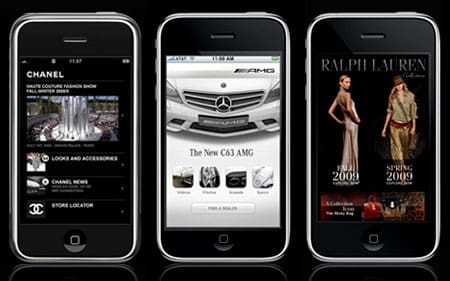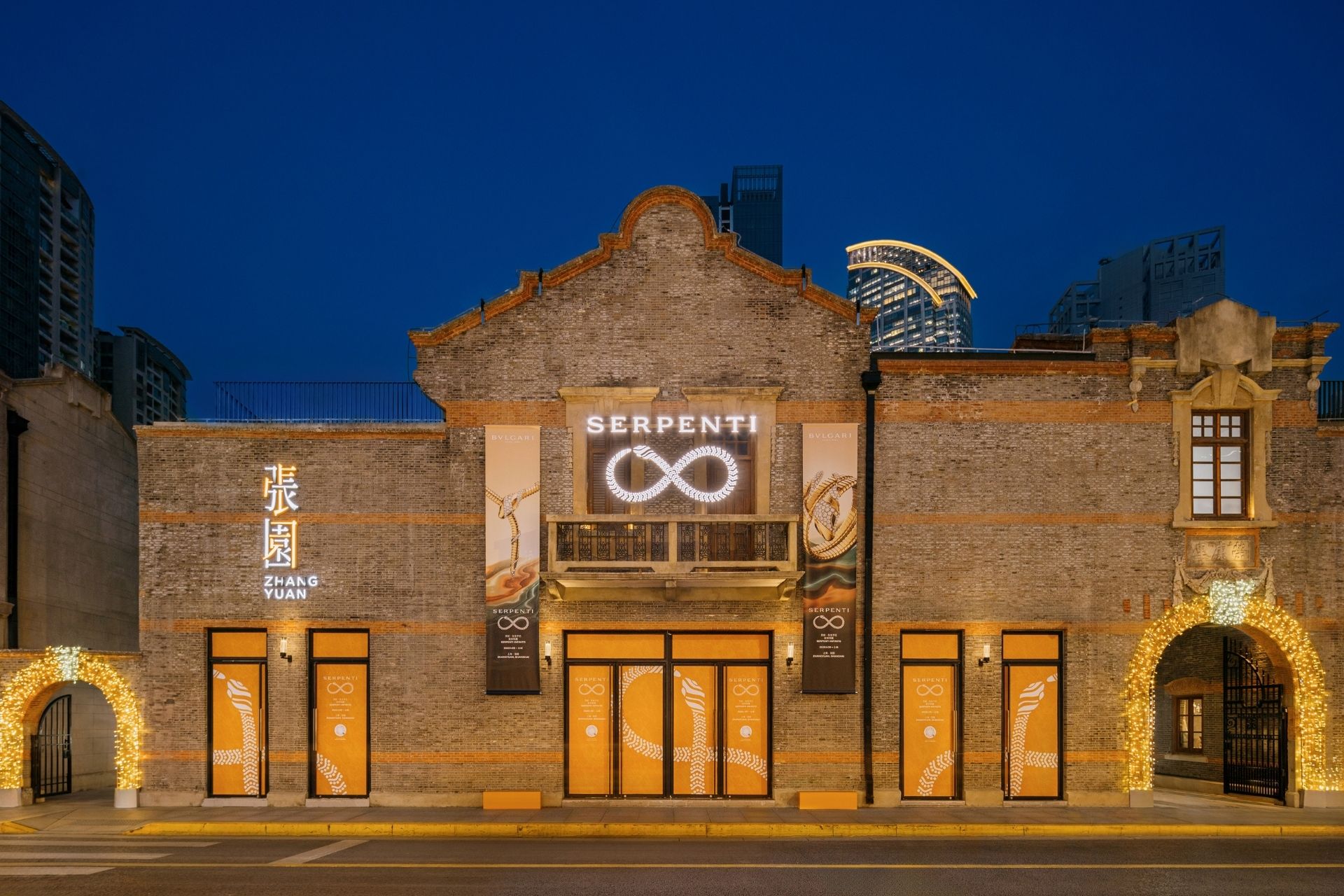
Disruptive ‘digital mobile’ technology has the potential to reinvent the way we think about luxury goods and to create new opportunities for entrepreneurial brands to re-energise affluent consumers.
Disruptive ‘digital mobile’ technology has the potential to reinvent the way we think about luxury goods and to create new opportunities for entrepreneurial brands to re-energise affluent consumers.
NEW YORK – The inconspicuous two-story buildings clustered along Sand Hill Road in Menlo Park, California, are home to roughly half of America’s venture capital and private equity companies. Strategically positioned at the centre of Silicon Valley, where constant technological innovation sustains a large and vibrant ecosystem of continuous creation and destruction of businesses, they are a physical manifestation of the powerful relationship between disruptive new technologies and entrepreneurial activity.
In today’s economic environment, with doom and gloom dominating the news cycle and sales figures dramatically down, the relationship between disruptive new technologies and entrepreneurship is more important than ever. “The internet will be a critical part of our recovery. Marshalling our technological prowess and unleashing our entrepreneurs online (and off) will create sustainable growth over the next decade,” predicts Eric Schmidt, chairman and chief executive of Google.
The luxury industry is not commonly associated with techno-entrepreneurship. But disruptive ‘digital mobile’ technology that allows people to harness computing power away from their desks has the potential to reinvent the way we think about luxury goods and to create new opportunities for entrepreneurial brands to re-energise affluent consumers.
Over the last few years, Giorgio Armani, Dior and others have entered the digital mobile space by launching luxury phones Designed to feel like objets d’art, some were made with materials like Swarovski crystals, crocodile skin, and diamond-encrusted platinum. Yet in terms of technology, they couldn’t compete with industry leaders Apple and RIM, ultimately offering little beyond the ‘bling’ factor.
But there’s more to digital mobile than handsets. Notably, Louis Vuitton has embraced a broader vision of digital mobile, partnering with new media company Soundwalk to develop a unique travel experience called Louis Vuitton Soundwalk Launched just before the 2008 Beijing Olympics, and designed to be played on Apple’s popular iPod, Vuitton’s Soundwalk was a perfectly synchronised audio journey narrated by three icons of Chinese cinema through the streets of Beijing, Shanghai and Hong Kong.

Louis Vuitton Soundwalk " target=“_blank” title=“http://www.louisvuittonsoundwalk.com__”>website
Setting fictional love stories in local streets, the boundaries between ‘digital’ and ‘real’ were blurred, making users feel like they were walking in a film. “It gave the user the sense that they were caught up in the middle of a romantic quest through the small streets and alleys of the city,” explains Adele Balderston, a producer at Soundwalk who worked on the Vuitton project. Significantly, Vuitton’s Soundwalk was an experience, not a mere object. Perhaps most remarkable was how it invited users to ‘communicate’ with a physical environment of walls and streets suddenly charged with stories, drama and emotion.
In July 2008, Apple launched its breakthrough iPhone 3G, together with the ‘Apps Store,’ which allows third parties to develop and distribute applications for the iPhone. Since then, it has become the preferred platform for companies entering the digital mobile space, triggering a boom in entrepreneurial activity so great The New York Times recently called it “The iPhone Gold Rush."
Luxury brands like Chanel, Ralph Lauren and Mercedes have released iPhone apps that allow consumers to browse new products in an intimate and discreet way. And today, there are thousands of apps available that do anything from identify the name of a song at a bar to book flights on British Airways. What is perhaps most remarkable about the explosion of iPhone apps is the way in which many of them invite users to “communicate” with non-human, inanimate objects. Mobile phones were originally conceived to let people talk with other people. But in the case of song recognition app Shazam, the iPhone lets people communicate with audio pattern recognition software that’s connected to a database of music tracks, while the British Airways app allows travellers to communicate with a computerised booking engine.

Chanel, Mercedes AMG and Ralph Lauren iPhone Apps
And the list of examples goes on. Nike’s latest running innovation, Nike+, lets runners communicate with iPods and personal computers via small accelerometers in their shoes, while millions of Londoners use Oyster Cards with embedded RFID chips to exchange information with buses and tube stations every day.
Indeed, people are increasingly using digital mobile technology to interact with inanimate objects, for both entertainment and utility. But objects are also communicating with people. In New York, a small start-up called Botanicalls has developed internet-enabled sensors that detect moisture levels in plant pots and send wireless signals to Twitter when a plant needs water. In London, Tower Bridge is on Twitter, making an announcement to its ‘followers’ each time it opens or closes to let a ship pass: “I am closing after the SB Hydrogen has passed downstream.”
Stan Wiechers, co-founder of the ubiquitous computing firm Brothers of Invention, explains: “It doesn’t matter that the playground slide, your sneakers or the neighbour’s cactus don’t have a concept of self-awareness as we know it; they will have sensors and a communication system representing their point of view.”
By connecting inanimate objects to the network, we are enabling them to communicate like sentient beings and, ultimately, to exert greater pull on people. When your plant sends you tweets asking to be watered, you develop a different kind of relationship to it.
Objects connected to the network can also become a powerful node for social interaction among people, what sociologists and technologists call ‘social objects.’ According to social media expert Hugh MacLeod, “The Social Object, in a nutshell, is the reason two people are talking to each other, as opposed to talking to somebody else. Human beings are social animals. We like to socialise. But if I think about it, there needs to be a reason for it to happen in the first place. That reason, that ‘node’ in the social network, is what we call the Social Object.”
So what does this mean for luxury brands?
“Luxury goods are the original social objects,” says Kevin Slavin, managing director and co-founder of Area/Code, a company that builds cross-media games and entertainment products. “They transmit value through their use.” In his book ”http://www.gladwell.com/blink/index.html" target=“_blank” title=“http://www.gladwell.com/blink/index.html”>Blink, Malcolm Gladwell writes about rapid cognition; that is, immediate judgments made about others, environments and situations through a process called ‘thin-slicing’: “When you meet someone for the first time, or walk into a house you are thinking of buying, or read the first few sentences of a book, your mind takes about two seconds to jump to a series of conclusions.” People are constantly thin-sliced based on social objects like clothing and accessories which are indicators of how one wishes to connect to others. Wearing an Hermès Cape Cod watch or Christian Louboutin shoes sends signals that ask to be picked up.
Social objects that carry and communicate symbolic value have existed for thousands of years – and the wealthy have always conveyed their status through the accumulation of goods that are ‘non-need based’, that is to say luxuries. Disruptive digital mobile technologies now make it possible to create luxury objects with the embedded intelligence to do and say things, not merely signify them.
During this period of economic downturn, these possibilities are particularly significant. Even though the Federal Reserve chairman Ben Bernanke has begun seeing “green shoots” and U.S. President Obama has been talking about “glimmers of hope,” when the recovery does come, for luxury brands things may not be as they once were. Especially in mature markets in the West, consumer attitudes towards luxury are changing. The highly affluent are less interested in amassing material possessions and more concerned with the accumulation of experiences. Brands that invest in the future of intelligent luxury goods that can offer consumers experiences, stories and relationships, as well as symbolic value, will have a major advantage.
According to Stan Wiechers, “soon everything will come online, everything will become aware of its context, and everything will be connected.” When this happens, Chanel bags could start to display emotions and forge relationships with their owners, creating the kind of personal appreciation that lasts much longer than a fashion season. Hermès riding saddles might help discover scenic horse trails across France. Cartier watches could connect like-minded people within a time zone and offer access to shared knowledge, expertise and influence. Boucheron jewellery might control a physical environment, opening doors to the world’s most exclusive private clubs. It’s a radical, yet surprisingly near future, and in the hands of entrepreneurial minds and forward-thinking brands, the luxury goods of tomorrow won’t just symbolise status in a select community, they will enable and sustain it.
But how do we get there? Admittedly, most luxury brands at present don’t have the capabilities to fulfil this vision. So how can a luxury CEO start to take practical action?
Technology Partnerships
First, luxury brands need to create more meaningful partnerships with industry leaders in digital mobile technology. “There’s potential for much deeper partnership between luxury brands and mobile manufacturers that goes well beyond handsets,” says Florian Peter, founder and CEO of boutique trend agency CScout
Environments for Experiments
However, establishing high-level partnerships isn’t enough. Within these larger structures, brands must develop more intimate environments in which product innovation teams can exchange ideas and work side-by-side with technologists. This means launching specialised inter-company innovation groups, or joint venture start-ups. In such a setting, progress will result from many small experiments. And fortunately, open-source software and advances in rapid prototyping technology like 3D printing make these kinds of experiments increasingly cost-effective.
New Skills Acquisition
Luxury brands may also need to bring people with new skill sets in-house. “Alongside their art directors, they need object directors,” remarks Stan Wiechers of Brothers of Invention, referring to specialised designers who conceive and develop new ways in which to communicate with computers through physical interactions that go beyond the traditional handset, mouse and keyboard.
Artistic Inspiration
But, perhaps the most important step in making intelligent luxury goods a reality is in the ideas themselves: what will they do? Brands need a captivating vision. And that won’t come from technology partners, entrepreneurs or consultants alone. It’s a growing trend at large companies to shake things up and inspire new ideas by getting top artists (what CMO of American Express, John Hayes, calls the ‘artocracy’) thinking about your business. Indeed, the smartest luxury brands will develop new products that excite consumers and push the envelope by getting artists and science fiction writers like William Gibson to help their strategy departments dream big about intelligent luxury goods.
If investing money in strategic partnerships and new ventures during a major economic downturn seems unsound, it’s worth remembering that recessions bring tremendous opportunities, and not only hardships. While companies hold onto their cash, they overlook opportunities that can provide huge competitive advantage and future growth. As New Yorker columnist James Surowiecki recently wrote, “numerous studies have shown that companies that keep spending on acquisition, advertising, and R&D; during recessions do significantly better than those which make big cuts.”
Indeed, as luxury consumers become less interested in status building and more concerned with well-being, happiness and personal experience, investing in the future of intelligent luxury objects will put forward-thinking brands ahead of the game when this recession ends.
Vikram Alexei Kansara is a writer and digital strategist based in New York







